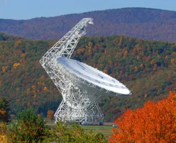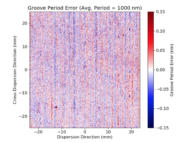The Undergraduate Research series is where we feature the research that you’re doing. If you are an undergraduate that took part in an REU or similar astro research project and would like to share this on Astrobites, please check out our submission page for more details. We would also love to hear about your more general research experience!

Winry Ember
UC Berkeley Space Sciences Laboratory
Winry Ember is a Junior Specialist working at UC Berkeley’s Space Sciences Laboratory during her gap year. She works with Dr. Marc Pulupa studying the properties of heliospheric plasma using data from NASA’s Parker Solar Probe. When she’s not analyzing plasma data, she loves to crochet, play harp, and lead physics-themed yoga classes.

NASA’s Parker Solar Probe (PSP), launched in 2018, is a revolutionary heliophysics mission to study the Sun’s atmosphere. PSP became the first spacecraft to “touch” the sun when it entered the solar corona — the outermost part of the Sun’s atmosphere — in April of 2021. While this pioneering probe is providing extraordinary insights about our host star, collecting accurate science data in such a unique environment can be quite the challenge — even when everything on the spacecraft is functioning properly. Let’s explore some of the steps being taken to more accurately evaluate plasma data gathered by the spacecraft’s Fields Experiment (FIELDS) instrument suite, which measures electric and magnetic fields around the sun.
Plasma is a gas that’s been ionized, or heated to such extreme temperatures that individual electrons are separated from the gas’s atoms. The gas atoms become ions when they lose their negative charge, and we’re left with a gaseous soup of negatively and positively charged particles — or plasma. Because these free electrons and ions are still attracted to one another, they oscillate around each other at a natural frequency. The denser the plasma is, the stronger the force pulling them back together will be, resulting in a higher plasma frequency. By utilizing FIELDS Radio Frequency Spectrometer (RFS) data and a technique called Quasi-Thermal Noise Spectroscopy (QTN), we can determine the densities and temperatures of electrons in heliospheric plasma.
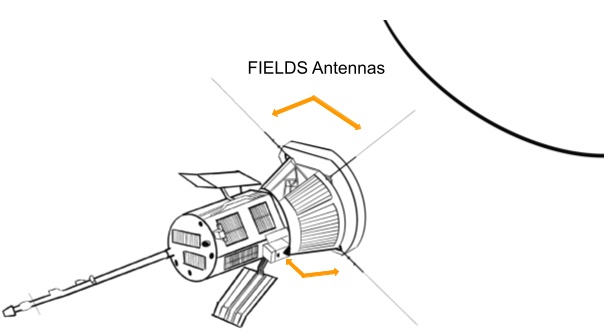
Credit: The Spectator/Aries Ho
QTN analysis uses measured electric field spectra to examine the location and shape of a plasma’s frequency peak (Fig 1). Because QTN provides exceptionally reliable and accurate measurements of a plasma’s electron parameters, this technique is routinely used to calibrate other instruments on PSP. With so many scientists relying on QTN measurements for successful instrument operation, it’s important that our fitted electron parameters be as accurate as possible.
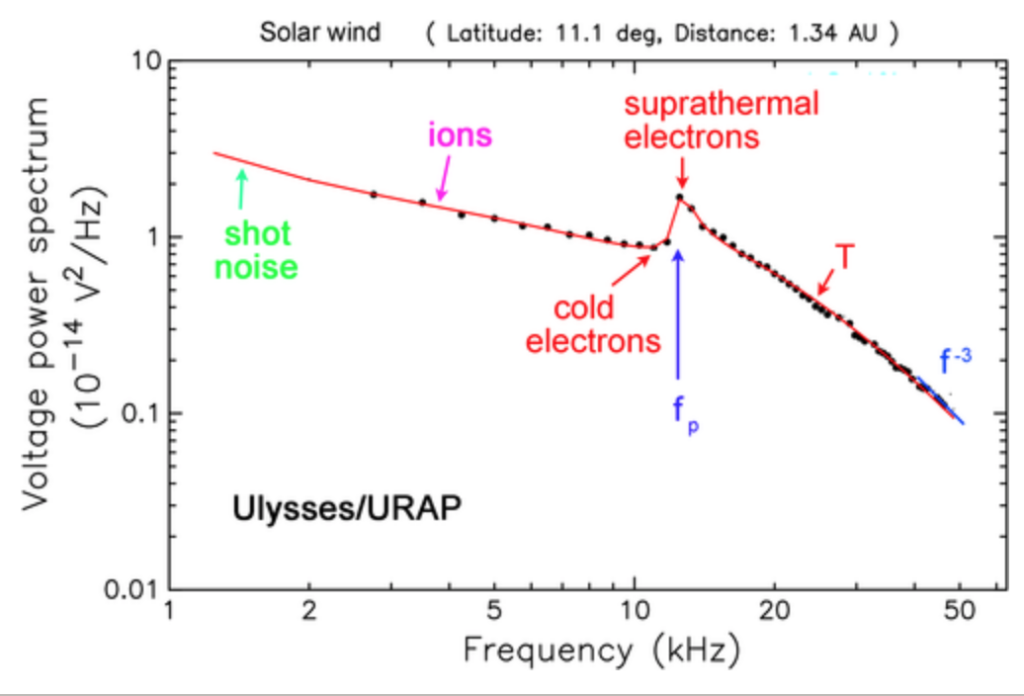
Conducting QTN with an instrument that’s part of a larger instrument suite is a lot like having roommates, though — there’s a lot of opportunity for growth and collaboration, but we have to be willing to make compromises. In the case of the electric field measurements on PSP, one such compromise is between the high-frequency RFS spectra and the low-frequency electric field measurements made using the same FIELDS antennas. Accurate measurements of low-frequency electric fields in the solar wind requires “current biasing”, a technique where a current is applied to the electric field antennas in order to bring the electric potential of the antennas close to the potential of the plasma. Adding a bias current generates electrons which change the antenna’s voltage as they leave. The high-frequency signature of these small voltage changes is called shot-noise, and it makes QTN analysis more difficult by obscuring the plasma line and frequency peak. Therefore, our goal is to quantify the effects of this shot noise on RFS data, and thereby improve QTN measurements of electron density and temperature in the inner heliosphere.
The best place to start was to analyze data from a regular instrument calibration activity called a Bias Sweep. During a Bias Sweep, the antenna’s applied current is rapidly varied over a wide range of negative to positive currents, allowing us to see how the plasma line responds to various applied currents, including zero bias current (Fig 2A). Then, by subtracting the average zero bias line from each bias sweep spectra, we’re able to isolate the effect of varying the current (Fig 2B).
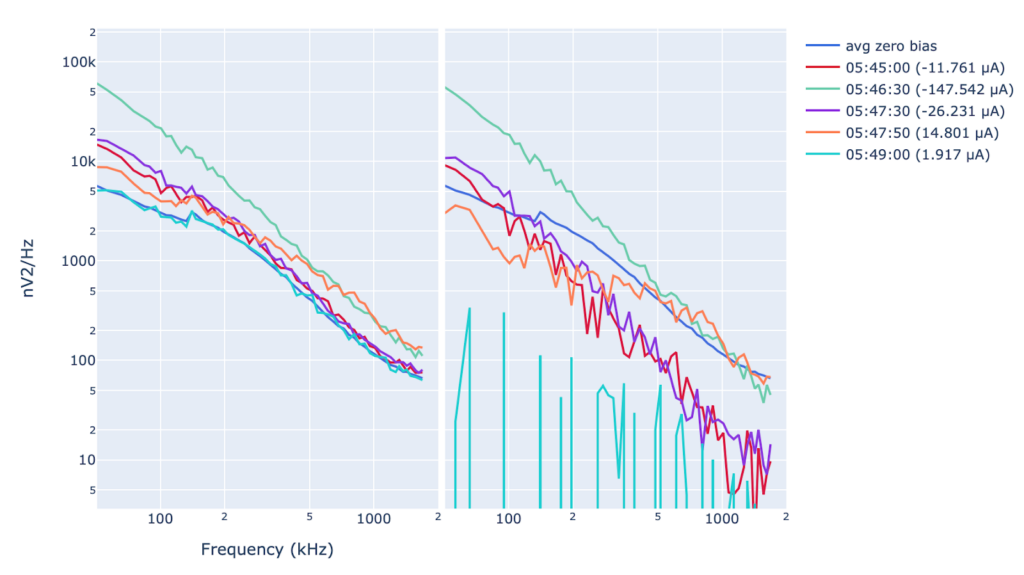
(right) Spectral cuts with zero-bias line subtracted
An alternative way to visualize the variation of RFS data with bias current is to plot a cut through the spectrum at a given frequency with the antenna current on the x-axis (Fig 3). This plot reveals that the shot noise generated from our nominal bias occurs where we observe the plasma frequency peak, and, more importantly, shows that it is possible to measure and understand the effect of current bias.

Moving forward, we plan to compare data from the hundreds of other bias sweeps conducted on PSP and fit the generated spectra to power law models predicted by theory. Because PSP is the first spacecraft to conduct QTN on a current-biased antenna, this is a unique problem not completely described by contemporary antenna response models. By better documenting some of the unique challenges of gathering and modeling in-situ data from the solar corona, we hope to expand current models for QTN analysis to account for operating with a bias current. While PSP is giving heliophysicists an unprecedented opportunity to explore the solar corona, none of that matters if we can’t make accurate measurements with the data it collects. Doing so can often be a challenge, but it’s nothing that a bit of plasma physics and elbow grease can’t fix.
Astrobite edited by: Sahil Hegde


